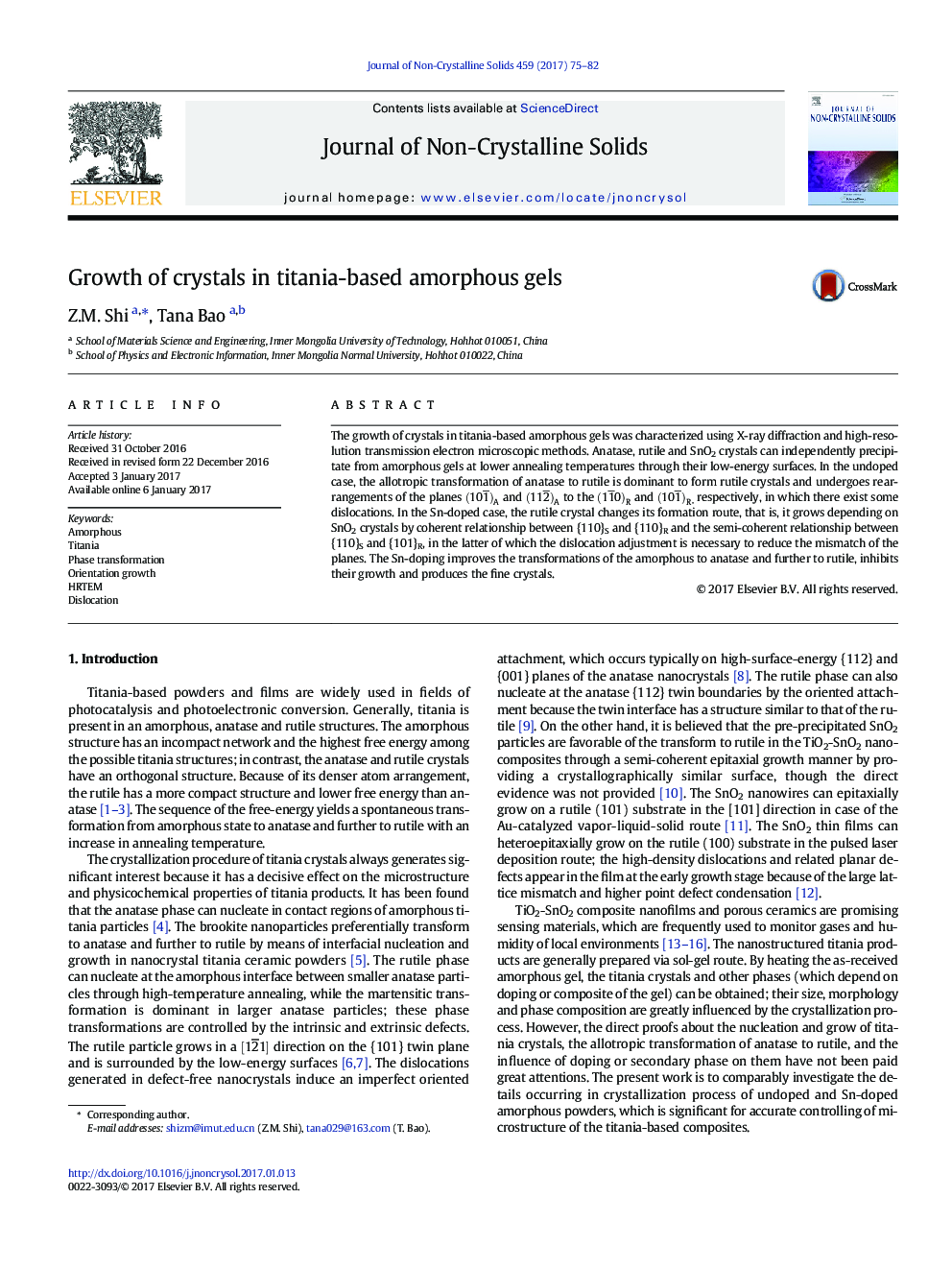| Article ID | Journal | Published Year | Pages | File Type |
|---|---|---|---|---|
| 5441434 | Journal of Non-Crystalline Solids | 2017 | 8 Pages |
Abstract
The growth of crystals in titania-based amorphous gels was characterized using X-ray diffraction and high-resolution transmission electron microscopic methods. Anatase, rutile and SnO2 crystals can independently precipitate from amorphous gels at lower annealing temperatures through their low-energy surfaces. In the undoped case, the allotropic transformation of anatase to rutile is dominant to form rutile crystals and undergoes rearrangements of the planes 101¯A and 112¯A to the 11¯0R and 101¯R, respectively, in which there exist some dislocations. In the Sn-doped case, the rutile crystal changes its formation route, that is, it grows depending on SnO2 crystals by coherent relationship between {110}S and {110}R and the semi-coherent relationship between {110}S and {101}R, in the latter of which the dislocation adjustment is necessary to reduce the mismatch of the planes. The Sn-doping improves the transformations of the amorphous to anatase and further to rutile, inhibits their growth and produces the fine crystals.
Related Topics
Physical Sciences and Engineering
Materials Science
Ceramics and Composites
Authors
Z.M. Shi, Tana Bao,
